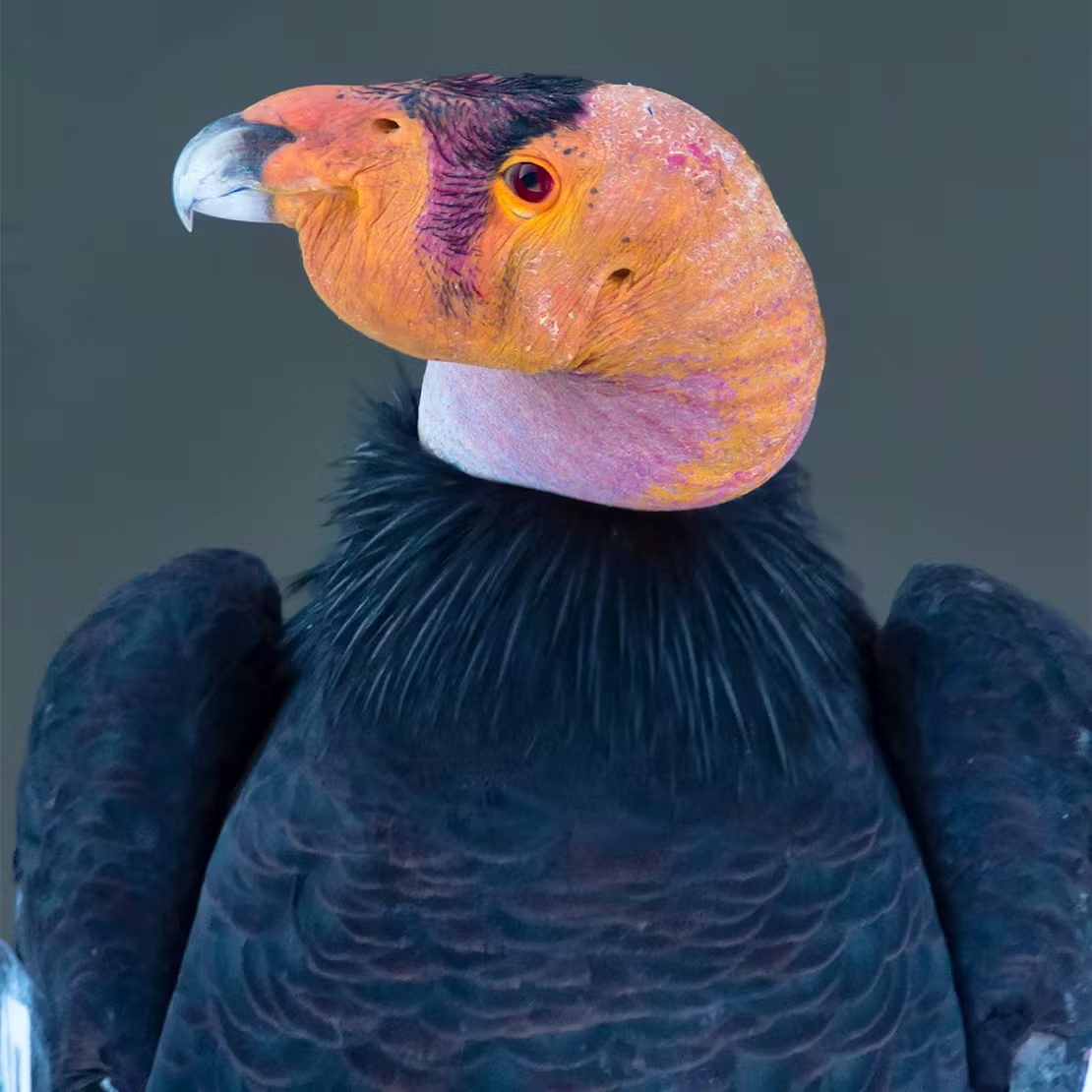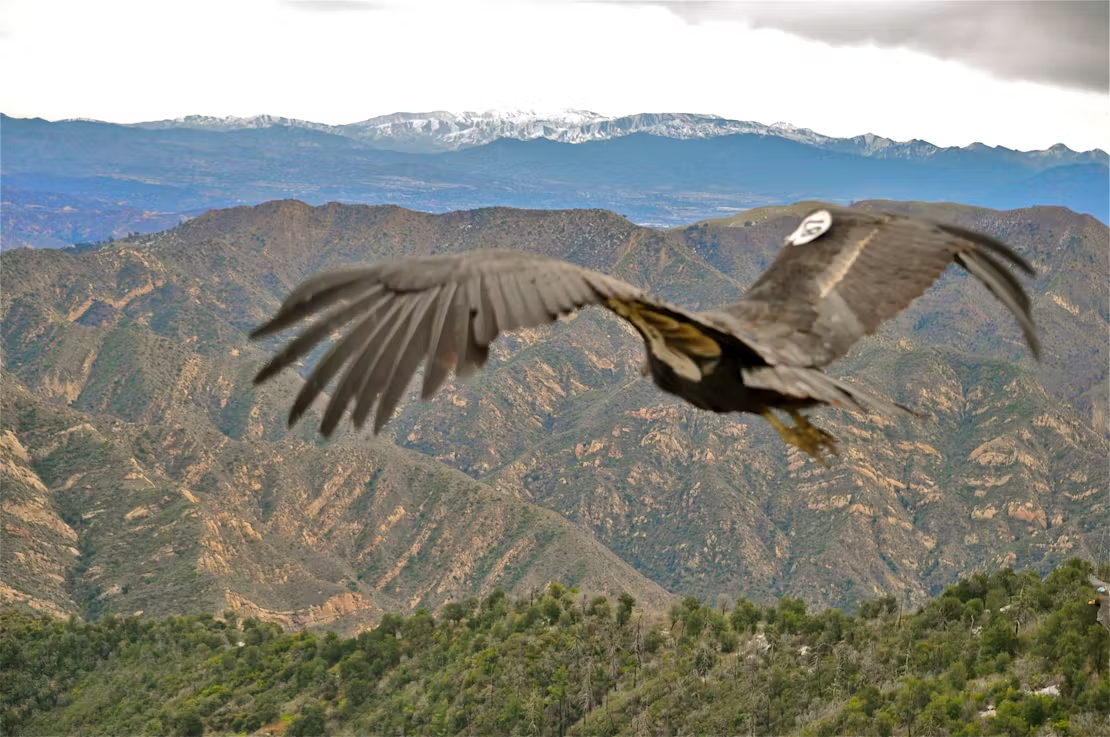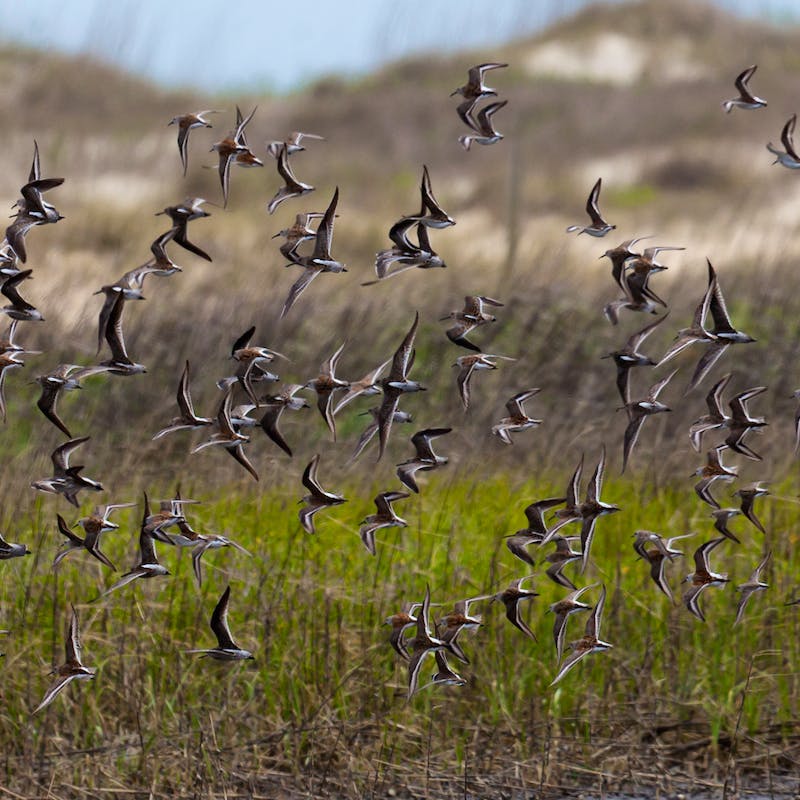Join our mobile Rapid Response Network!
You can be the first to hear about how we’re going to hold this administration accountable and how you can fight back for wildlife!
California condors are North America’s largest land-based bird with an impressive wingspan of nearly 10 feet.
These birds have been around since the late Pleistocene Era, 40,000 years ago. They nest on high, difficult to access cliff faces or in tall, gnarled trees. California condors travel up to 250 miles a day in search of food.
Why are California condors endangered?
The population steadily declined during the 20th century until there were only 22 California condors known to exist in the world.
The last of the free-flying condors were taken into captivity in 1987 to avoid additional mortality and to preserve as much diversity of the gene pool as possible. Reintroduction of condors into the wild began in early 1992 and continues today, with the population of approximately 350 in the wild.
Lead poisoning from spent ammunition is the number one cause of death among adult California condors in the wild. Condors also pick up and feed their young small objects left behind by humans known as “microtrash”, such as pieces of glass and metal, and have been known to accidentally drink poison like antifreeze. Human development and uncharacteristically large, severe wildfires have significantly degraded or destroyed the habitat condors require for foraging, nesting and roosting.
Humans are the greatest threat. Lead poisoning, microtrash ingestion and habitat destruction from housing developments, severe wildfires and oil and gas drilling all threaten condors.

Defenders' Impact
Over the last decade, Defenders worked with the California state legislature to require the phase out the use of lead ammunition to take wildlife statewide by 2019, and we continue to advocate for an end to lead ammunition on all public lands, particularly national wildlife refuges.
Defenders works closely with federal and state agencies, as well as renewable energy companies, to develop long-term “smart from the start” wind and solar energy development plans that protect key landscapes, including condors and their habitat. We also engage with wind energy producers and closely tracks the progress of federal policies that could determine how wind energy projects impact condors.
What You Can Do
Encourage hunters to use lead free, non-toxic ammunition. Adopt “Leave No Trace” ethics and organize clean-up activities in condor habitat.

About
Efforts to reintroduce California condors began in early 1992. Today they can be found primarily in California, Arizona, southern Utah and northern Baja California, Mexico. California condors live in rocky, forested regions including canyons, gorges and mountains.
The California condor population steadily declined during the 20th century until there were only about 22 known to exist in the world. By the end of 2022, there were 347 free-flying condors in the wild and 214 in captivity.
Condors can soar to heights of 15,000 feet and may travel up to 250 miles a day in search of their next meal. They find their food mostly by their keen eyesight, as they have a poor sense of smell. Condors will often seek out other scavengers, such as turkey vultures, to track potential food sources.
California condors most often nest in caves, crevices in rock faces and tree cavities. Condors don’t reach adulthood until they are six or seven years old. Once sexually mature, they produce just one egg each year and provide an extensive amount of parental care. The chick learns to fly when they are about six months old and stay with the parents for several more months afterward.
Mating Season: Winter - Spring
Gestation: About 56 days for egg incubation
Clutch size: One egg
Condors consume carrion (dead animal carcasses). They prefer the carcasses of large dead animals like deer, cattle and sheep, as well as marine mammals that have washed up on the shore along the coastline. However, they are also known to eat the carcasses of smaller animals like squirrels and rabbits.
Featured
Coexisting with Birds
The California condor won’t be able to recover until manufacturers and hunters step up and move away from lead ammunition. Only with significant human support will we make any more headway toward keeping these incredible flying creatures in their rightful place in the wild.
News










